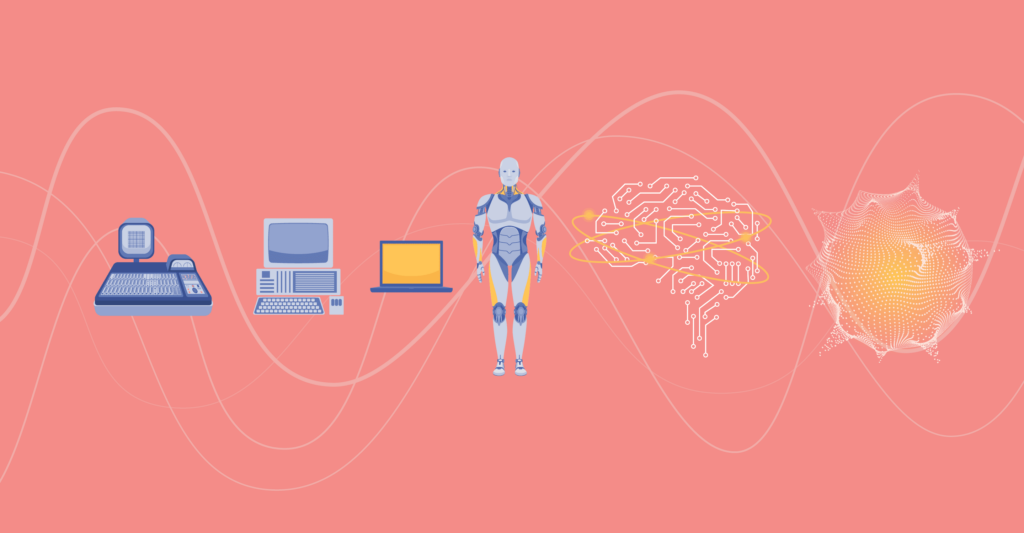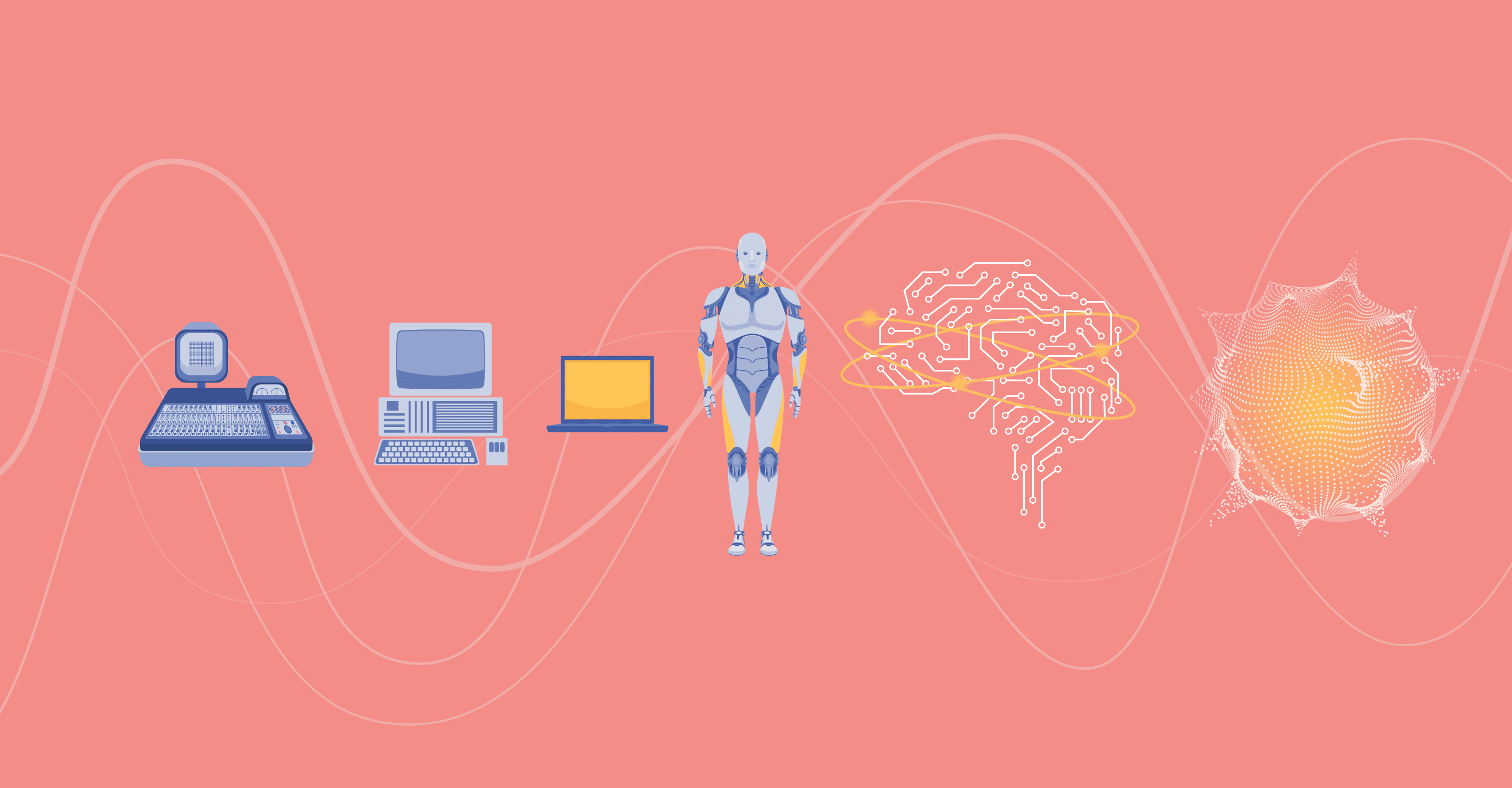Artificial Intelligence (AI) has quickly become an integral part of our lives, transforming industries and revolutionising the way we work with technology. Alongside the rapid advancements in AI, the concept of Artificial General Intelligence (AGI) has emerged, referring to theoretical machines that possess human-like cognitive abilities and which can perform a wide range of intellectual tasks. Understanding the distinction between AI and AGI is crucial because it shapes expectations, influences policy decisions, and raises important ethical considerations.
The Rise of Artificial Intelligence
AI is experiencing exponential growth, driven by advancements in computing power and data availability. It now encompasses a wide range of techniques and technologies that enable computer systems to mimic human intelligence. AI has been found to have applications across various industries including healthcare, finance, transportation, and entertainment, revolutionising processes, improving efficiency, and paving the way for innovation.

The Potentials of Artificial General Intelligence
While AI focuses on narrow domains and specific tasks, AGI represents the next level of machine intelligence. AGI aims to develop highly autonomous systems that possess human-like cognitive abilities, and which can excel in a broad range of intellectual tasks.
True AGI systems, with human-level capabilities, do not currently exist. Whilst there are ongoing research efforts, and companies such as OpenAI and DeepMind are working towards AGI, practical implementations remain in the realms of speculation and exploration. Some researchers have proposed theoretical frameworks and general theories, but these are in the early stages of development and have not yet resulted in functional AGI systems.
Despite still being a theoretical concept, the potentials of AGI are vast, offering unprecedented problem-solving capabilities, scientific breakthroughs, and having significant transformative effects on industries and societies.
Understanding Artificial Intelligence
AI can be defined as the creation of intelligent computer systems that can perceive, learn, reason, and take actions. This concept encompasses machine learning algorithms, natural language processing, computer vision, and robotics.
The applications of AI range from virtual assistants and recommendation systems to autonomous vehicles and predictive analytics. Despite its advancements, AI has limitations and operates within specific domains, lacking the broad adaptability and general problem-solving capabilities of AGI.
Unpacking Artificial General Intelligence
An AGI system is one which possesses cognitive thinking, reasoning and problem-solving capabilities comparable to those of a human. AGI goes beyond the limitations of AI by enabling machines to more effectively comprehend information, learn from it, and apply its knowledge across a diverse range of domains, with emphasis on adaptability, creativity, and general problem-solving skills. Its development requires advancements in areas like reasoning, knowledge representation, and contextual understanding.
Generative AI
Generative AI is an exciting branch of artificial intelligence which focuses on developing models that can generate original and creative content. By harnessing deep learning and neural networks, these models can learn from extensive datasets and produce outputs that range from images to text and music. The use of Generative Adversarial Networks (GANs) is a prominent technique within generative AI, with a generator network producing synthetic content, and a discriminator network discerning between real and generated content. The applications of generative AI systems are wide-ranging, with potential uses in art, design, entertainment, and other creative industries.
Artificial Superintelligence
Artificial Superintelligence (ASI) refers to the theoretical development of highly advanced intelligence systems that surpass human-level cognitive abilities in nearly all domains. ASI represents the pinnacle of artificial intelligence, where machines possess intellect beyond that of humans. Such systems would exhibit capabilities like adaptability, contextual understanding, and autonomous learning, thereby enabling them to tackle an extensive range of intellectual tasks with unprecedented efficiency and effectiveness.
AI vs AGI: Key Differences
The distinction between AI and AGI lies in their scope and capabilities, and it’s important to note that, as AGI remains theoretical, the following comparisons are made between the traits of existing AI models and those of hypothetical AGI systems, and thus are necessarily speculative.
AI focuses on task-specific systems designed to excel in narrow, specific domains (e.g. ChatGPT for language modelling; DALLE for image generation; GitHub Copilot for coding), whereas AGI aims to replicate human-level intelligence across multiple domains through adaptability, contextual understanding, and autonomous learning. To an extent, it strives to do this by building on areas of existing AI systems, and by exceeding its predecessor in a number of key domains such as level of intelligence, self-awareness, and versatility.
The key differences between AI and the theoretical AGI are as follows:
Scope
The term ‘AI’ is often used generally, encompassing any technology that enables machines to perform intelligent tasks. In this context, it incorporates both the AI systems that focus narrowly on specific tasks, and AGI, which has a broader range of
Versatility
AI systems and tools are typically designed to excel at specific tasks or within specific domains. They are specialised and lack the ability to transfer knowledge and skills to other areas. AGI, on the other hand, is versatile and can apply its intelligence to a range of tasks, making it more adaptable.
Autonomy
AI systems often require human intervention or guidance in order to function effectively. They operate within predefined boundaries and cannot function autonomously beyond the capabilities for which they were designed. AGI systems, conversely, possess a high degree of autonomy and can operate independently, self-improving and making decisions without the need for human intervention.
Level of Intelligence
AI systems, including advanced machine learning algorithms and expert systems, can demonstrate intelligence in specific tasks, but they do not possess a comprehensive understanding or awareness of their environment. AGI systems are designed to possess human-level intelligence, enabling them to understand context, adapt to new and evolving situations, and perform a wide range of cognitive tasks at a level comparable to that of humans.
Self-awareness
AI systems lack self-awareness and consciousness. They are designed to process information and make decisions based on predefined algorithms or patterns. If, by definition, an AGI system must function on the same level as human intelligence then, in contrast to standard AI, it must also have the capacity for self-awareness and consciousness, thereby allowing it to have a subjective experience and possess a sense of identity.
Challenges and Concerns
The development and deployment of AI has raised important ethical questions which are growing in terms of magnitude and quantity with each new development in the field of artificial intelligence. The advent of AGI is therefore likely to magnify this effect, ushering in a whole new set of risks and ethical concerns, including the potential for unintended consequences and control challenges.
Ensuring fairness, transparency, and accountability in AI and AGI decision-making is essential to avoiding biases and discrimination. Responsible development, robust governance frameworks, and the active involvement of stakeholders are necessary to mitigate risks and ensure the safe use of these technologies.
Future Outlook and Possibilities
The future of AI and AGI holds tremendous potential. Ongoing research and advancements continue to push the boundaries of AI’s capabilities, paving the way for further innovation. The transformative effects of AGI on industries and society would likely be profound, leading to substantial advancements in healthcare, scientific discovery, automation, and more. Balancing innovation with ethical considerations and safety precautions is vital in order to harness the full potential of AI and AGI for the benefit of humanity.
Conclusion. AI and AGI
Both AI and AGI have garnered significant attention and sparked numerous discussions across a range of industries despite the fact that the latter is currently in the most formative, theoretical and academic stages of its development. AI has experienced rapid growth and widespread adoption across multiple sectors. Businesses are leveraging AI technologies for tasks such as data analysis, automation, customer service, and personalised recommendations. AI has also shown great potential in optimising processes, improving decision-making, and enhancing overall efficiency. Industries such as healthcare, finance, manufacturing, and transportation have employed AI to drive innovation, streamline operations, and deliver enhanced services.
Existing AI systems are not yet advanced enough to qualify as being AGI. However, despite the fact that AGI remains largely hypothetical, opinions and perspectives vary, ranging from enthusiastic anticipation to cautious scepticism. Some see AGI as a transformative force that could unlock unprecedented advancements, revolutionise industries, and solve complex global challenges. They envision AGI as a tool for scientific breakthroughs, advanced research, and exponential economic growth. Others approach AGI with caution, raising concerns about safety, ethics, and the potential impact on jobs and human society.
The implications of AI for the software development industry have already been monumental, enabling engineers to automate routine tasks, analyse huge datasets with unprecedented efficiency, and free themselves up to focus on solving the creative problems which are thus far out of AI’s reach. The development of reliable AGI systems is likely to accelerate these trends, whilst also enabling developers to incorporate AI into additional facets of business.
Understanding the distinctions between AI and the as yet hypothetical AGI is essential in navigating the evolving landscape of artificial intelligence. Specific AI tools have already made a significant impact on the world, while AGI represents the next frontier, offering human-level cognitive abilities. Ethical considerations regarding the deployment of these technologies must be taken. By embracing innovation while upholding ethical standards, we can unlock the full potential of AI and AGI, transforming industries and shaping a brighter future for humanity.



